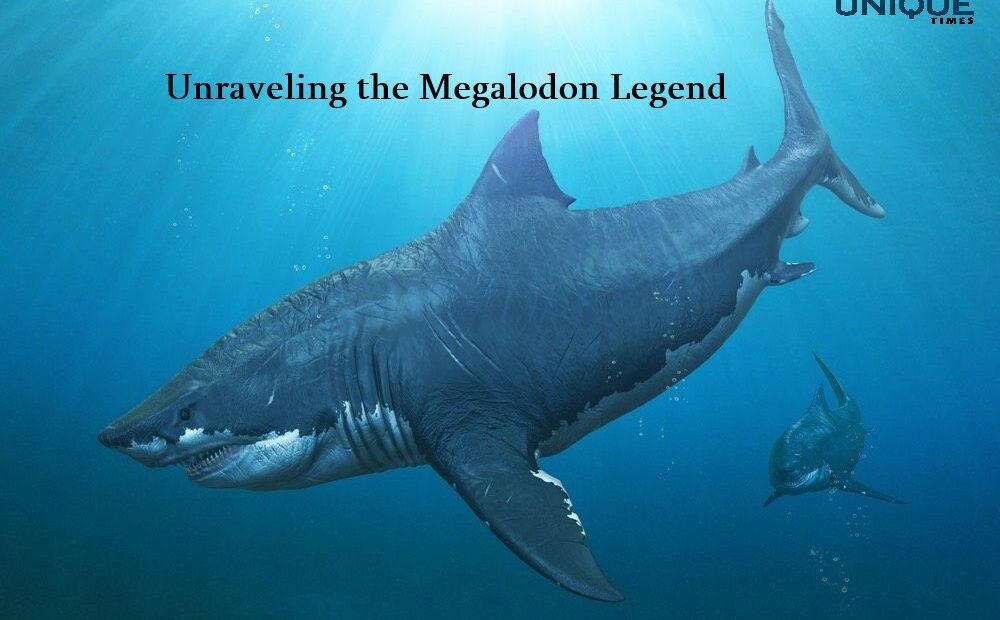The Megalodon – Unraveling the Legend of the Prehistoric Giant

Throughout history, myths and legends of colossal sea creatures have captivated our imaginations. Among these, the Megalodon stands as one of the most awe-inspiring and mysterious creatures to have ever roamed the oceans. As a prehistoric giant, this ancient shark continues to intrigue scientists and enthusiasts alike. In this blog, we will dive deep into the world of the Megalodon, exploring its fascinating history, characteristics, and the truth behind the legend of this enormous apex predator.
- A Glimpse into the Past
The Megalodon, scientifically known as Carcharocles megalodon, existed during the Miocene and Pliocene epochs, approximately 23 to 2.6 million years ago. Its name, derived from Greek words “megas” (big) and “odous” (tooth), aptly describes this creature’s most striking feature – its gigantic teeth. The fossil records of these enormous teeth and vertebrae have allowed scientists to piece together the puzzle of its existence and appearance.
- The Size and Characteristics of the Megalodon
Estimating the exact size of the Megalodon has been a challenge due to the rarity of complete fossils. However, based on the teeth and vertebrae found, researchers believe the Megalodon reached lengths of up to 60 feet (18 meters) or possibly even larger. Its massive size made it the largest known shark in history, dwarfing even the modern-day great white shark.
The Megalodon’s jaw spanned several meters wide, armed with colossal teeth that could measure more than 7 inches (18 cm) in length. These serrated teeth, expertly designed for shearing through tough prey, provide valuable insight into the shark’s predatory behavior.
- A Top Predator of the Ancient Seas
As an apex predator, the Megalodon dominated the prehistoric oceans, ruling the food chain with its sheer power and size. Its diet likely consisted of large marine mammals, such as whales, dolphins, and seals. The formidable force of the Megalodon’s bite would have allowed it to incapacitate even the most significant of marine creatures.
- Extinction Theories
Despite its reign as the ocean’s most fearsome predator, the Megalodon eventually disappeared from the fossil record around 2.6 million years ago. The reasons for its extinction remain a subject of debate among scientists. Some theories suggest that changes in the marine ecosystem, such as shifts in temperature and sea levels, might have played a role. Others propose that competition for food resources with other evolving predators or disease outbreaks could have contributed to its demise.
- Separating Fact from Fiction
The awe-inspiring nature of the Megalodon has led to its portrayal in various movies, documentaries, and pop culture. However, it is essential to distinguish between the scientific reality of this prehistoric giant and the embellishments of fictional tales.
Contrary to some sensationalized depictions, the Megalodon is indeed extinct and does not secretly roam the deep sea. There is no concrete evidence to support the idea of its survival into modern times.
Conclusion
The Megalodon stands as an iconic symbol of ancient marine life, a formidable predator that once ruled the prehistoric oceans. Its enormous size, powerful bite, and mysterious extinction continue to capture our imaginations. By unraveling the legend of the Megalodon and embracing the scientific discoveries, we gain a deeper appreciation for the fascinating creatures that once inhabited our planet.
Though the Megalodon is no longer present in our world, its legacy endures as a reminder of the astonishing diversity and wonders that have graced Earth throughout history. As we continue to explore and uncover the secrets of the past, let us remain in awe of the majestic creatures that once called our oceans home.
Picture Courtesy: Google/images are subject to copyright








